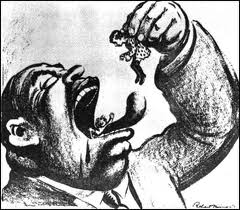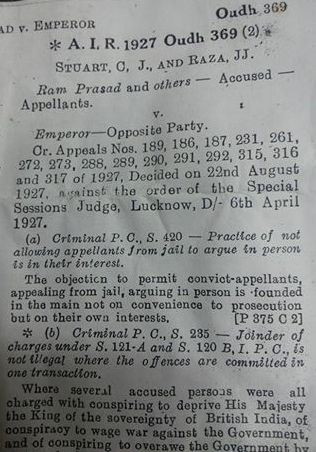33% child domestic workers physically abused
 नई दिल्ली: हालांकि सुप्रीम कोर्ट ने इस मामले में सरकार और पुलिस से जवाब तलब कर लिया है, लेकिन देश के अधिकांश लोग उस पर बहुत चकित नहीं हैं। वास्तविकता तो यह है कि बुलंदशहर के महिला थाने में बलात्कार पीडित बच्ची को हवालात में बंद कर देना किसी भी पुलिसवाले की मंशा हर्गिज नहीं हो सकती है। दरअसल, यह एक आदत है। एक सामाजिक आदत, जो बुलंदशहर थाने की घटना से अचानक तब परिलक्षित हुई जब खबरनवासों ने हल्ला मचा दिया। अब बात उधेड़ने की नौबत आ गयी, तो शोरगुल मच गया।
नई दिल्ली: हालांकि सुप्रीम कोर्ट ने इस मामले में सरकार और पुलिस से जवाब तलब कर लिया है, लेकिन देश के अधिकांश लोग उस पर बहुत चकित नहीं हैं। वास्तविकता तो यह है कि बुलंदशहर के महिला थाने में बलात्कार पीडित बच्ची को हवालात में बंद कर देना किसी भी पुलिसवाले की मंशा हर्गिज नहीं हो सकती है। दरअसल, यह एक आदत है। एक सामाजिक आदत, जो बुलंदशहर थाने की घटना से अचानक तब परिलक्षित हुई जब खबरनवासों ने हल्ला मचा दिया। अब बात उधेड़ने की नौबत आ गयी, तो शोरगुल मच गया।
चंद खबरें आपकी निगाहों तक पहुंचाने का निवेदन करना चाहता हूं। चिंचवाड़ में 4 साल की बच्चीं से दुराचार, वालसाड़ में दस साल की बच्चीन से उसका चाचा दुष्कर्म कर डालता है, आसनसोल में बच्चों को बिजली के तार से झटके दिये जाते हैं, तो कहीं लातूर में एक किशोरी के साथ तीन युवक बलात्कार करते हैं। लेकिन यह सब कोई नजीर नहीं हैं। यह तो एक दिन का रोजनामचा है, चिंचवाड़ा, वालसाड़, आसनसोल या लातूर जैसी वारदातें तो देश के हर इलाके में रोजाना हो रही हैं। क्या आपके आसपास ऐसा कोई हादसा नहीं है कि किसी बच्ची या बच्चे ने अचानक स्कूल जाना क्यों बंद किया। जवाब यह है कि विद्यालय छोड़ने वाले बच्चों में 53 प्रतिशत बच्चों को सेक्सुअली अब्यूज किया गया। उनमें से ज्यादातर ने बहुत कोंचने पर अपने अभिभावकों को बताया भी होगा, लेकिन वे भी चुप ही रहे। कौन बात का बतंगड़ बनाये। गरीब हैं, किसी तरह उन्हें शादी करा देंगे, बात खत्म। कम से कम इज्जत तो बची रह जाएगी।
आइये, कुछ आंकड़े और देख लिया जाए। 5 से 14 साल के 48 प्रतिशत बच्चों को फिजिकल एब्यूज का सामना पड़ता है, जबकि 13 से 14 साल के उम्र में करीब सवा 26 फीसदी बच्चे इस प्रताड़ना सहन करते हैं। दिल्ली, महाराष्ट्र्, गुजरात और मध्यप्रदेश के आंकड़े तो और रोंगटे खड़े कर देते हैं। यहां लड़कियों के मुकाबले लड़कों पर मुसीबत होती है। आइये हम आपको दिखाते हैं बच्चों पर तोड़ते कहर की दिल दहला सकने वाली एक रिपोर्ट, जिससे फर्स्टपोस्ट डाट ने प्रकाशित किया है।
It takes a special kind of savagery to do this: to take a ten year old child who comes into a police station after having been raped, and lock her up in the station’s holding-pen. To watch, as she tries to reach out through the cage’s wires, as a local journalist records her presence on film.
Earlier, children, aged between 10 and 12, were paraded on the streets of West Bengal’s Asansol, beaten with electric wire and tied to bamboo poles—all this in front of police—because they stole from the local market. I’m guessing few people even remember the four year old raped in Chinchwad, the ten year old Valsad girl raped by her uncle or the Latur teenager who was raped by three young men in her village, and then hanged from a Jamun tree.
India treats its children worse than animals, every single day—but there’ve been no mass protests at these outrages, no sit-ins targeting the chief minister, not even a candlelight vigil at India Gate.
The Supreme Court has now stepped in, demanding an explanation for the Bulandshahr outrage. It is too easy, though to blame the police officers—women, parenthetically—for this. The officers responsible, guilty as they are of serious crimes, ought be marched out of their uniforms and into prison—but we must accept they reflect the values and attitudes of the societies they are drawn
Leave aside having worse child-nutrition statistics than sub-Saharan Africa, our failure to ensure primary education for all; the persistence of child labour—Indian children’s lives aren’t about school or playgrounds, but physical violence, emotional abuse and rape.
This is the way it is, because we as people do not care enough to change it.
Back in 2007, the Union Ministry of Women and Child Development released a terrifying study of how we treat our children. Fifty three percent of the children, the Study reported, said they had encountered “one or more forms of sexual abuse”; 68.99 percent said they had encountered physical abuse. More than a fifth reported severe sexual abuse, including assault, having been compelled to fondle adults’ private parts, exhibit themselves, or photographed nude. Well over half of those reporting severe sexual abuse, the study found, were boys.
Nearly three out of four children polled reported having been physically abused—kicking, slapping or corporal punishment. In all thirteen states covered by the Study, the incidence of physical abuse directed at children was above 50 percent.
The worst victims were the very young. Forty-eight percent of respondents who reported physical abuse were between five and twelve years old, while 26.29 percent were thirteen or fourteen years old. “In all age groups”, the Study states, “an overwhelming majority of children (65.01 percent) reported being beaten at school”.
Indian homes, the data showed, weren’t any safer than schools. Fifty-three percent of children not going to school said they had been sexually abused in their family environment. Just under half said they had encountered sexual abuse at their schools. Most vulnerable were children in workplaces; 61.31 percent of whom had been sexually abused. In all but four of thirteen states—Gujarat, Madhya Pradesh, Delhi and Maharashtra—boys were found to be more at risk of sexual abuse than girls. In Delhi, a staggering 65.6 percent of boys reported having been sexually abused. (contd……बुलंदशहर के थाने से बहुत आगे है बच्चों पर प्रताड़ना)


